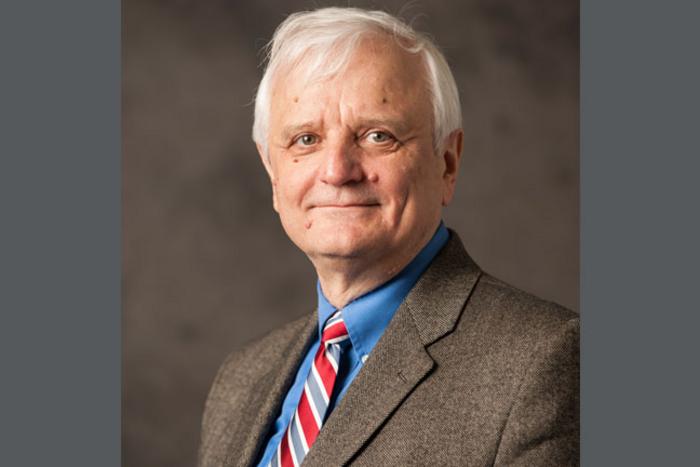We all know that communication encompasses so much more than words. Facial expressions, intonations, hand gestures, and more contribute to our expressiveness. However, in social media, these intricacies are lost.

Credit: Rensselaer Polytechnic Institute
We all know that communication encompasses so much more than words. Facial expressions, intonations, hand gestures, and more contribute to our expressiveness. However, in social media, these intricacies are lost.
Until now, not much research has been done on communication on social media in contrast to offline, traditional forms. In research recently published, Boleslaw Szymanski, Ph.D., and team found that the dynamics, although similar, have different repercussions and contribute to the rise in polarizing viewpoints. Szymanski is the Claire & Roland Schmitt Distinguished Professor of Computer Science and Director of the Network Science and Technology Center (NeST) at Rensselaer Polytechnic Institute. Szymanski was joined in research at Rensselaer by postdoctoral research associate James Flamino and graduate student Mohammed Shahid Modi.
Szymanski and team analyzed about 183 million posts on Parler, the social media platform marketed toward right-leaning users seeking an alternative to Twitter, and 702 million Twitter posts. Both of the datasets contained posts from September until December, 2020. On both Parler and Twitter, the team found that users’ views shifted toward popular opinion (also known as homophily) and, when views expressed did not reflect their own, they migrated away from the platforms altogether.
“In previous research, we analyzed political viewpoints of students on university campuses,” said Szymanski. “We found that student groups comprised of majority opinion holders were more stable and long-lived. Similarly, with our latest research, we found that Parler users who were majority opinion holders had more stable membership and stayed on the platform longer. They were the extreme right. Liberal-based content comprised an insignificant minority of the content. However, Twitter users started with a broad range of political leanings, and then gravitated toward one end of the spectrum or the other. The commonality was that users either moved toward like-minded groups or dropped out altogether.”
Dropout rates from universities are 80 to 100 times lower than that of social media platforms, given the lower social cost. People can drop out of social media platforms without jeopardizing long-term relationships. The comparison is important when analyzing popular opinion, shifts in opinion, and the influence of social media on our political discourse. Without the aforementioned intricacies of offline communication, it is also more difficult to judge whether online content is real or fake.
“It is important to not only temper the drawbacks of social media, but to amplify its benefits,” said Szymanski. “Although social media helps to democratize information, the tendency of users to seek out echo chambers certainly contributes to the social divisiveness that we’re seeing.”
Specifically, the team found that Twitter users navigated toward two large groups with either liberal or conservative-biased news. Parler users, on the other hand, comprised only one large, majority, conservative-biased group. Parler users were also most likely to follow fake news or gravitate toward it, indicating that those who began as fake news followers tended to continue on the same path. Also, Parler users with other viewpoints were more likely to shift and start spreading fake news themselves, which suggests the presence of an echo chamber. The fake news group on Twitter did not attract many users.
“As we look forward to another election season, we should reflect on the disruptive potential of unverified and biased news, especially with the coming proliferation of generative AI or so-called ‘deep fake’ audio and video clips that serve to reinforce pre-existing points of view,” said Curt Breneman, Ph.D., dean of Rensselaer’s School of Science. “Dr. Szymanski’s research offers a new perspective on this important issue, and I hope his insights are considered by social media users and regulators.”
###
About Rensselaer Polytechnic Institute:
Founded in 1824 for the application of science to the common purposes of life, Rensselaer Polytechnic Institute is the first technological research university in the United States. Today, it is recognized as a premier university, noted for its robust and holistic learning community that connects creativity with science and technology. RPI is dedicated to inventing for the future, from shaping the scientists, engineers, technologists, architects, and entrepreneurs who will define what’s next for humanity, to research that bridges disciplines to solve the world’s toughest problems. Learn more at rpi.edu.
Contact:
Katie Malatino
Senior Communications Specialist
malatk@rpi.edu
838-240-5691
For general inquiries: newsmedia@rpi.edu
Visit the Rensselaer research and discovery blog:
Follow us on Twitter: @RPINews
Journal
IEEE Communications Magazine
Method of Research
Data/statistical analysis
Subject of Research
People
Article Title
Dynamics of Ideological Biases of Social Media Users
Article Publication Date
3-May-2024



